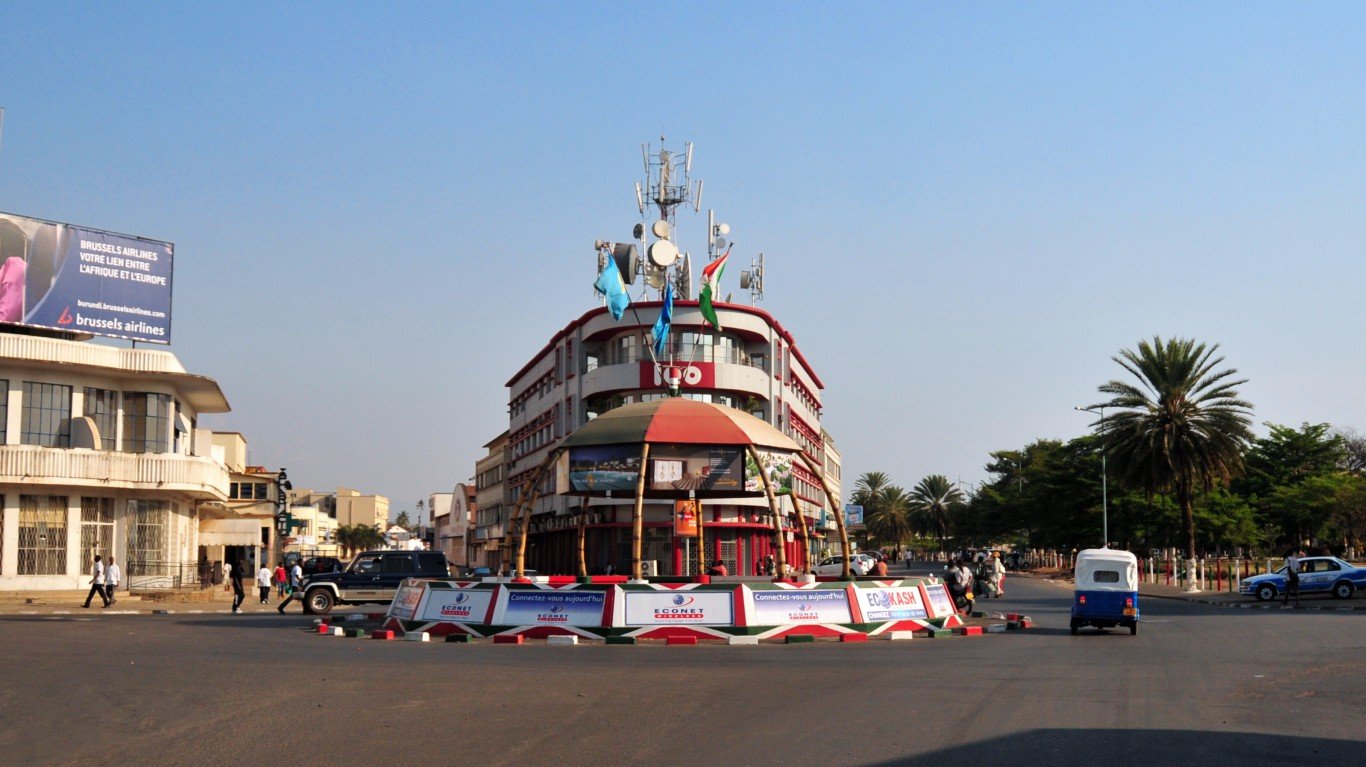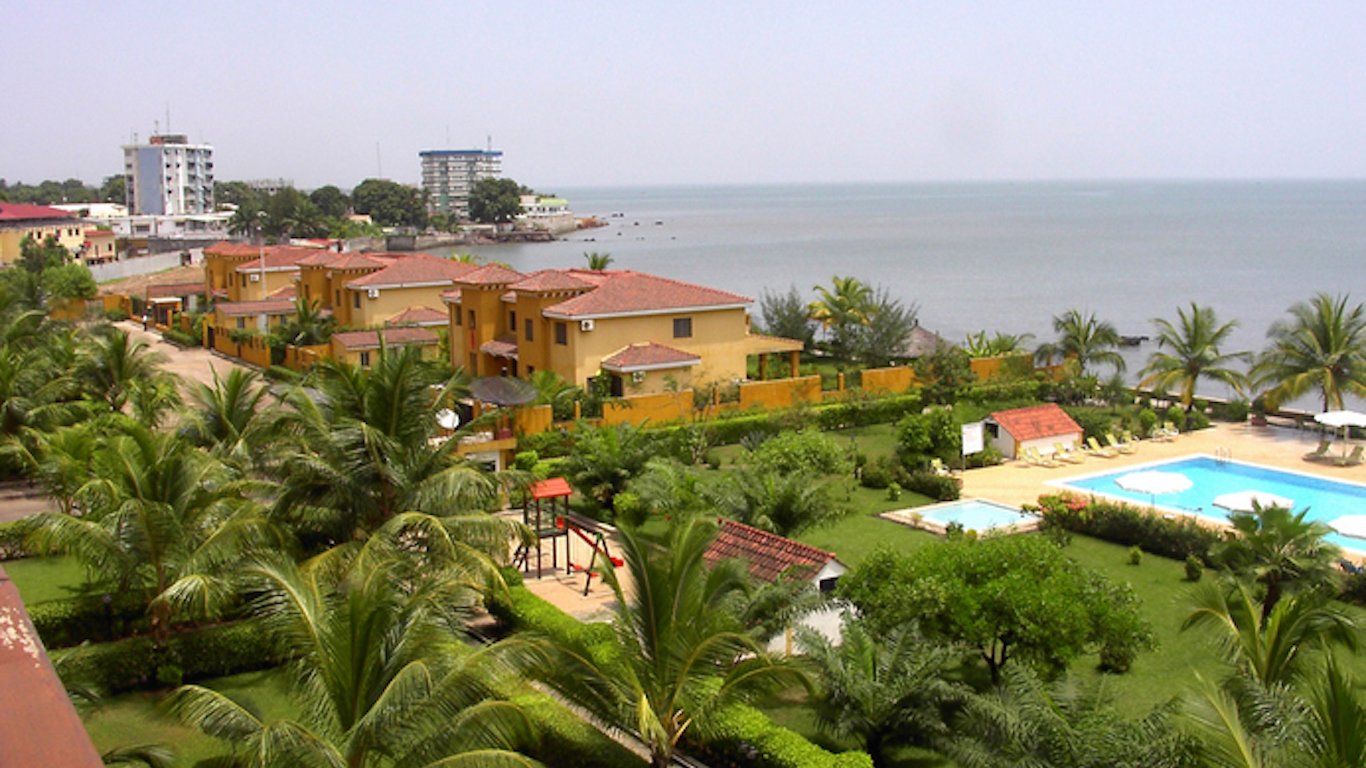

The disparity in economic and political opportunities for men and women has always been a problem, but there are signs of improvement, according to the World Economic Forum (WEF) 2018 Global Gender Report. Some countries are faring better than others, depending on what aspect of equality is examined.
In its annual report, the WEF reviewed share of men and women working, economic opportunities, educational attainment, health status, and political empowerment, to measure overall gender equality in 149 countries. 24/7 Wall St. reviewed for each country the ratio of male to female pay.
Women in many countries, especially those with more advanced economies, are relatively well educated but paid relatively little. About half of all 149 countries included in the report have a wage gap smaller than the average, which sees women making 65 cents for every dollar men make for similar work. The reasons vary from unequal parental responsibilities and political underrepresentation to deep-rooted gender stereotypes and men simply asking for more money.
The countries with the smallest overall gender gaps are not necessarily the same as those that pay similar wages to men and women for similar work. In fact, only three are in the top 10 of both rankings — Iceland, Finland, and the Philippines. And only in three of the 149 countries included in the report do women earn more than men — Burundi, Cameroon, and Lao People’s Democratic Republic.
Some people may assume that more developed countries treat women more fairly, but this is not true in all cases. If current rates of closing the gap are maintained, then it will completely close in 61 years in Western Europe. By contrast, it will take 171 years in East Asia and the Pacific, 165 years in North America, 153 years in the Middle East, 135 years in Sub-Saharan Africa, 74 years in Latin America and the Caribbean 70 years in South Asia.
Small wage gaps do not necessarily indicate equal employment opportunities. Some countries, such as Oman and Algeria, have similar pay for the same jobs, but the problem is that fewer women are employed in those jobs.
While some countries treat women better than others, and improvements have been made over the last few years, not one country offers even close to completely equal opportunities, despite laws mandating otherwise. Even countries with the smallest wage gaps have women making around 80 cents on the dollar.
The following list is based on the World Economic Forum’s 2018 Global Gender Report, which compares 149 countries and their progress toward gender parity. One of the dimensions is economic participation and opportunity, which includes wage equality for similar work. The estimated annual income for men and women, as well as the share of women working and in top positions, also came from the report.
Click here to see the best countries for working women that don’t pay fairly.

10. Burundi
> Avg. cents earned by women per dollar of male earnings: 78.9 cents
> Annual income gap: $-211
> Share of women working: 81.5%
> Share of women in top positions: 32.4%
Burundi, a country of about 10 million people in East Africa, is the only nation in the top 10 where women actually earn more than men — the estimated annual earned income is $875 for women and $664 for men. The 32% difference in favor of women is the biggest among all 149 countries in the Global Gender Report. Their jobs are mostly in the agricultural sector, which accounts for about 90% of the country’s export.
While the economic ranking for women in the country is high, educational attainment is not. Burundi ranks 130th in the Global Gender Report. About 55% of women can read and write, compared with 70% of men, and only 4% are enrolled in tertiary education, such as college or trade school, compared with 9% for men.
[in-text-ad]

9. Philippines
> Avg. cents earned by women per dollar of male earnings: 79.3 cents
> Annual income gap: $3,084
> Share of women working: 51.4%
> Share of women in top positions: 51.5%
The Philippines’ overall gender gap has actually widened. The country ranks eighth in 2018, down from being No. 6 in 2006. It has the highest percentage of women legislators, senior officials and managers (51.5%), as well as professional and technical workers (58.2%). This may reflect the Philippines’ high education ranking — more women are enrolled in primary, secondary and tertiary education than in most countries.
Even though the gender gap score is high, there are no non-discrimination laws for hiring women. Economic growth and progress made in reducing the gender gap over the years have not translated into sufficient employment growth for women.
The agriculture sector is one of the largest employers of women, but still offers fewer jobs for them. The labor participation for women is just over 51%, while for men it is 77%.

8. United States
> Avg. cents earned by women per dollar of male earnings: 79.6 cents
> Annual income gap: $25,499
> Share of women working: 66.2%
> Share of women in top positions: 40.5%
When it comes to economic participation and opportunity, American women are doing worse than men in all aspects except university enrollment and the number of professional and technical workers — 59.9% are women. Still, they make less than 80% of what men make for similar work.
Also, while women work more minutes per day, a higher percentage of the work they do is unpaid. Women don’t get paid for an average of 242 minutes of work each day, compared with 148 minutes for men, according to the Organization for Economic Cooperation and Development, a group of mostly rich countries. If women were paid for that work, $28 trillion would be added to the world economy.
This and other factors, such as political empowerment, contribute to an overall gender gap ranking of 51st out of 149 in 2018, compared with 23rd out of 114 in 2006.

7. Finland
> Avg. cents earned by women per dollar of male earnings: 79.6 cents
> Annual income gap: $14,642
> Share of women working: 74.3%
> Share of women in top positions: 31.3%
Finland has consistently ranked high when it comes to closing the overall gender gap. It was in the top three in 2006, although it has slipped since then. Slightly more women are professional or technical workers, and more women attend school (95%), especially college, than men (80%).
Still, despite laws against discrimination and paying differently on the basis of sex, women make $37,665 compared with $52,297 for men. Part of the difference can be explained by the kind of jobs they have. The sectors that employ mostly women â over 90% — are child care, health care, office work and cleaning, fields that are not highly paid.
[in-text-ad-2]

6. Guinea
> Avg. cents earned by women per dollar of male earnings: 79.8 cents
> Annual income gap: $761
> Share of women working: 65.2%
> Share of women in top positions: n/a
There isn’t a big difference in employment in Guinea — 65.2% of women and 66.4% of men have jobs — but almost everything else is heavily in men’s favor. About twice as many men have a higher education degree and they make about 30% more money a year, despite a law that mandates equal pay.
Women’s roles in the country are still often limited to the household and being wives and mothers. While unmarried women are not discriminated against legally, married women do face inequalities under the law when it comes to access to employment, choosing where to live, and being head of the family.

5. Albania
> Avg. cents earned by women per dollar of male earnings: 80.2 cents
> Annual income gap: $5,445
> Share of women working: 55.6%
> Share of women in top positions: 22.6%
The small Balkan country of about 3 million has more women than men employed in professional and technical jobs, and more with tertiary education, but only about a third of government positions and a fifth of managerial positions are held by women.
Just under 56% of women in Albania participate in the labor force, compared with 75% of men, and women are the first to lose their jobs. Despite non-discrimination laws in hiring, women sometimes don’t get jobs because they choose to start a family. For that reason, they occupy lower ranking positions, for which they are paid less. On average, men make make about $15,000 a year, while women earn just over $9,000.
[in-text-ad]

4. Tajikistan
> Avg. cents earned by women per dollar of male earnings: 80.2 cents
> Annual income gap: $3,535
> Share of women working: 48.0%
> Share of women in top positions: 14.8%
Tajikistan, a mountainous country in Central Asia, was included in the 2018 Gender Gap Report for the first time. With the exception of wage equality for similar work, for which the country ranks in the top five, every other economic opportunity score is below 100 out of 149 countries. The worst is estimated earned income: men make about 70% more than women — $4,939 and $1,404 a year on average, respectively.
Households headed by women in Tajikistan are among those facing the highest risk of poverty. Single and abandoned women face stigmas that further limit access to education, resources, and employment, especially in rural areas.

3. Oman
> Avg. cents earned by women per dollar of male earnings: 81.3 cents
> Annual income gap: $45,400
> Share of women working: 31.7%
> Share of women in top positions: 11.1%
Similar to Tajikistan, Oman, where laws are based on Islamic Sharia, scores poorly when it comes to women’s equality, with the single exception of the wage gap. Even though women in this Middle Eastern country are not paid much less than men for similar work, few are actually employed. Just over 31% of women have jobs, compared with 89% of men. However, more women go to school than men, especially to earn a college degree.

2. Singapore
> Avg. cents earned by women per dollar of male earnings: 81.9 cents
> Annual income gap: $32,987
> Share of women working: 68.7%
> Share of women in top positions: 34.5%
Singapore has made tremendous progress in improving its score for economic participation and opportunity for women over the last couple of years, but it has dropped, or stayed the same, in other categories. Women are more educated but less employed and underpaid. Twice as many women work part-time as men, which may explain why their estimated annual income is about $30,000 less than men, who make about $110,000 a year.
One reason for the disparity may be the difficulty in getting women back to work after having children. Few workplaces offer flexible hours or child-care benefits, and commutes are often very long.
[in-text-ad-2]

1. Iceland
> Avg. cents earned by women per dollar of male earnings: 82.0 cents
> Annual income gap: $17,168
> Share of women working: 86.1%
> Share of women in top positions: 32.4%
For the 10th year in a row, Iceland is the most women-empowering place in the world. The small island country of 340,000 people moved from fourth to first place in the overall ranking since 2006.
This progress can be traced to a protest movement that began in 1975, when more than 25,000 women, or 90% of the working women in Iceland and a fifth of the female population, did not go to work. It seems their message — that without women working, a society simply can’t function — was heard. Within five years, Iceland had elected the world’s first female president.
Now, companies have to prove they are not paying women less and those employing more than 50 people have to have at least 40% women on their boards.
Take This Retirement Quiz To Get Matched With A Financial Advisor (Sponsored)
Take the quiz below to get matched with a financial advisor today.
Each advisor has been vetted by SmartAsset and is held to a fiduciary standard to act in your best interests.
Here’s how it works:
1. Answer SmartAsset advisor match quiz
2. Review your pre-screened matches at your leisure. Check out the
advisors’ profiles.
3. Speak with advisors at no cost to you. Have an introductory call on the phone or introduction in person and choose whom to work with in the future
Take the retirement quiz right here.
Thank you for reading! Have some feedback for us?
Contact the 24/7 Wall St. editorial team.
 24/7 Wall St.
24/7 Wall St.
